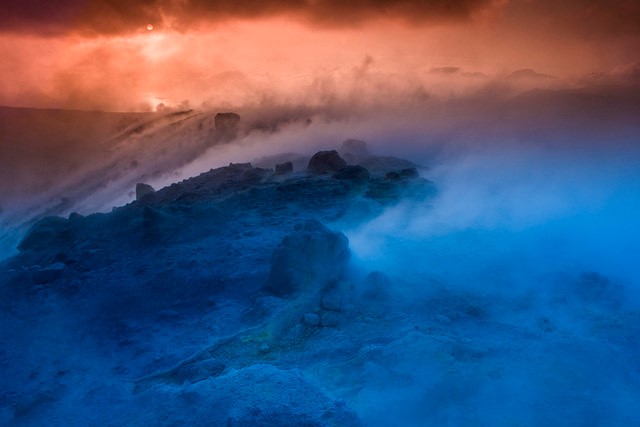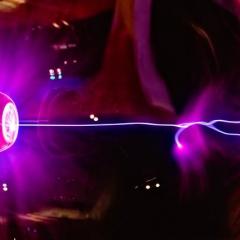Research Seminar - An artistic path between art and science: Vulcano, Fata Morgana, and Min Min Light
Photo credit: Maria Leonardo Cabrita
An artistic path between art and science: Vulcano, Fata Morgana, and Min Min Light
Presented by: Maria Leornardo Cabrita
Date: Tuesday 23 April 2024
Time: 12:00-1:00pm
Location: Online via Zoom and in-person at the SCA Writer's Studio (Level 6, Michie Building)
Abstract
This seminar will feature materials from Maria Leonardo Cabritas artistic and research projects: Vulcano, Fata Morgana, and Min Min Light.
Vulcano
In the 19th century, French astronomer Urbain Le Verrier (1811-1877) presumed the existence of a planetary-mass located between the Sun and Mercury and named it Vulcan. By the mid-1800s, the idea gained traction, with others joining the hunt to find the lost planet. Yet, nothing was ever located. Vulcan was not there. In the following pages, however, Maria Leonardo Cabrita (b. 1989) turns back the clock. She imagines the discovery of a new cosmos and captures Vulcan’s geology on camera. These photographs were made on the real island of Vulcano, 20km north of Sicily. Steam rises from its volcanic surface, bathing barren landscapes in mist. Pictures are flooded with otherworldly neon hues; skies turn red, blue, orange, and pink. Cabrita’s research-led project is particularly prescient right now. We are learning more about space than ever before, with innovations like NASA’s Curiosity Rover and the James Webb Telescope sending images back to Earth.
Fata Morgana
On June 1, 1798, Napoleon and his troops invaded Egypt. On the way to Cairo, they traveled through the Sahara Desert not knowing that the sun could kill a man. In the vast desert, they saw distant lakes that seemed to promise an end to their anguish. They speeded up their pace only to see paradise fading away and receding at their approach. These lakes were mirages and many of these soldiers died of heatstroke and thirst. It was also on this trip that this optical phenomenon was studied accurately in Western Civilization for the first time by Gaspard Monge. Thus, today we inevitably link mirages with a tradition of fatalism and an underlying effect of colonization.
Fata Morgana investigates the concept of optical mirage, mapping its representation in the visual arts from 1800 to the present day.
As Christopher Pinney states in The Waterless Sea, A Curious History of Mirages, 2018: “The Mirage is like a mirror”, we read it as we want, politically or culturally, but it does not end in its infinity.”
Min Min Light
Min Min Light is my current work in progress. Min Min Lights is a luminous phenomenon in the Australian desert, in the Outback region. It has been described as one or several ghostly spheres of light appearing in motion near the horizon line. Min Min Lights owes its name to a hotel that burned down in 1918 between the villages of Boulia and Winton. A local reported to the police that he was chased by an eerie light during a nighttime horseback ride.
In 2002, the scientist John D Pettigrew solved this riddle by conferring on it the status of an optical mirage. Despite this resolution, observers continue to find disparate and fanciful explanations. In Australian Indigenous culture, the lights have been described as a ghostly fireball restoring the stars to the sky. The myth takes place in the so-called "Dream-time", a concept describing the origins of the universe.
Since 2000, The Min Lights have served as a tourist attraction. The village of Boulia is the home of the Min Min Encounter, a museum that presents different local stories staged in a theatrical show, incorporating animatronics, fiber optics, and lots of high-tech "wizardry".The artistic project intends to investigate these lights in an artistic work. The project is on the threshold of science and imagination, documentary and fiction. It aims to produce a work that reflects on the process of searching for light. To quote James Turrell: "Light is not so much something that reveals, as it is itself the revelation".
Presenter
Maria Leonardo Cabrita (1989) is a PhD candidate in Multimedia Art at the Faculty of Fine Arts of Lisbon and a scholarship holder of FCT (Fundação da Ciência e Tecnologia). She has a bachelor's degree in Sculpture and holds an MA in Multimedia Arts. She also completed a diploma at the Academy of Fine Arts (AdBK) in Munich in 2022.
She participated in several exhibitions such as the Portuguese Photography Cycle in Brazil, Manchas Urbanas, Museum Municipal of Arts (MuMA), Curitiba, Brazil, 2014; Prisma Bahnhof, part of the Berlin Portuguese Cinema Festival, 2015; Vulcano at Lothringer 13 Halle, Munich, 2020; Vampyroteuthis Infernalis, 10 Minutes, Amberg, Germany; Porto Bienal of photography, 2023; Fata Morgana, in Sigismund Kapelle, Regensburg, Germany, 2023; Hephaestus Dream, in Pó de Vir a Ser, Évora, 2024.
In 2020, she was nominated for the Förderpreise Photography Award in Munich, Germany. She also won the Experimental Photography scholarships from the Bösenberg Stiftung Foundation for the Min Min Light project in 2019; Specialization and Professional Development in Arts from the Gulbenkian Foundation in 2017; Academy of Fine Arts (AdBK) Merit Scholarship, Munich, 2020. Since 2015, her photographs have been part of the collection of MuMA in Brazil. Since 2023, she has been part of the European photographer-artist Network Futures.
Her work looks upon the photographic medium itself. It engages with different subjects such as history, science, and other non-artistic practices to question the very nature of photography. Recently, she has been studying the interconnectivity between optical mirages, images, and the act of seeing.
About Research Seminar and Workshop Series
School of Communication and Arts Research Seminar Series
The research seminar and workshop series occur each semester, each with a different topic and guest speaker from UQ or otherwise.
Friday, 28 February Hybrid: Online via Zoom and in person at the | Generative Hate | |
Friday, 21 March Hybrid: Online via Zoom and in person at the | Close Encounters of the Hermeneutic Kind: UFOs as More-than-Human Media | |
Friday, 11 April Hybrid: Online via Zoom and in person at the | Indigenous and Local Knowledge Systems and Community Radio in India | A/Prof Elske van de Fliert |
Friday, 23 May Hybrid: Online via Zoom and in person at the | The Drama Of Anthropological History | |
Friday, 6 June Hybrid: Online via Zoom and in person at the | Video, Bias, Action. Mitigating Cognitive Biases through Role-Play Video Scenarios | |
Thursday, 31 July Hybrid: Online via Zoom and in person at the | Crossing Disciplinary Boundaries: Experiments in Public Engagement | Prof Sally Shuttleworth (Oxford University) |
Friday, 8 August Hybrid: Online via Zoom and in person at the | Designing engagement for coral reef rescue | A/Prof Elske van de Fliert and Dr Skye Doherty |
Friday, 22 August Hybrid: Online via Zoom and in person at the | Pigeon Fool’s Turing test: The relationship between embodied AI bots and networked and absent humans | Dr Abbie Trott |
Friday, 19 September Hybrid: Online via Zoom and in person at the | War in Our Hyperconnected World: Exposing the Invisible Battlespace | Dr Kathryn Brimblecombe-Fox |




